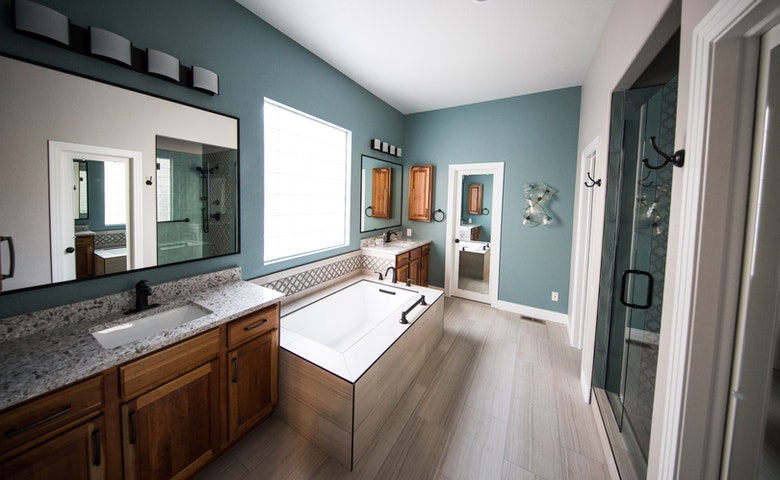How to calculate louvre air flow for the layman

The air conditioning, ventilation, and heating industry uses fire dampers, a crucial passive fire protection measure. A fire damper typically opens when heat from a fire raises a room’s usual temperature by 165°F since it is built to automatically shut heat. The damper-connected fuse melts, enabling the damping door’s door to shut. To maintain a wall or floor fire rating, they are specifically located in a duct at the junction of the fire barriers in building zones, such as divisions at the point of penetration of the duct. The fire damper ensures that the existing lock is secure.
Until temperatures reach the barrier’s fire-rating threshold, the fire damper safeguards the existing barrier by preventing fire penetration. Its major objective is to stop fire from spreading from one side to the other of a fire-rated barrier. The damper is made to a high grade of integrity and is designed to endure high temperatures for as long as feasible.
The fusible element in the fire damper melts when the room temperature reaches roughly 165 degrees Fahrenheit, enabling the door to close. Louvretecperth says this aids in preventing the fire from spreading and doing the most damage. Rooms that are often heated to 165 degrees or above need fire dampers with higher melting point fusible connections, property owners should be informed.
The damper helps to stop a fire from spreading throughout the house by stopping the spread of fire via HVAC and ductwork. In the case of a fire, they also aid in limiting the amount of smoke that may travel down the ductwork.
There are two different fire damper types available for residential settings. There are two kinds of fire dampers: dynamic and static.
Interactive Fire Dampers
These dampers are made with a continuous fan usage as vertical barriers and a spring-loaded construction. A loaded door system may be opened with the aid of the ventilator’s air pressure, allowing it to continue operating fast.
Static fire dampers
Static fire dampers are erected as horizontal barriers with a curtain-like construction, in contrast to dynamic fire dampers. The HVAC fans are programmed to shut off if a device with static fire dampers is activated and the door of the damper is deteriorating from the weight of the damper. Regardless of the systems in use, home owners must call HVAC specialists to examine the dampers and fix any damage as soon as possible.
Due to their essential safety characteristics, fire dampers should be inspected and maintained on a regular basis. Checking that the fusible connection is still there and not coated in dirt and dust is all that is required for fire damper maintenance on models with fusible connections. Circuit-based fire dampers need to be inspected more often. Even if the tests are successful, the dampers need to undergo routine physical inspections.
Filter for Sand Trap Louvers
Any air handling system must include sand trap louvres, which are typically found at the initial point of the air intake. Sand trap louvres, as their name suggests, keep sand out of the equipment rooms or the air intake unit, protecting the equipment’s moving components. They are also utilized for ventilation in parking lots, warehouses, generator rooms, and fan rooms, among other locations, in arid or sandy environments. It has a high degree of sand and big dust particle separation in the presence of high dust concentrations. Due to the vertically oriented blade components and apertures for sand drainage, the sand trap louver installation requires no maintenance. In order to avoid unwanted dust loading in conventional filters, it is designed to remove large sand and dust particles from the airstream at moderate speeds.
It is not intended to be used as a substitute for conventional filters. Installation of sand trap louvers with the express purpose of removing dust and sand from the air. For the ventilation and intake ducts of air handling units, it is effective and acceptable to utilize. The assembly is corrosion-resistant and suited for all weather situations since it includes a full aluminum extruded profile unit. Filters and dampers are provided as alternatives for sand trap louver installation.
To determine a louvre’s capacity more accurately, we need the means to meaningfully incorporate the free area and First Water Penetration. We want to establish the greatest amount of air that can pass through the louvre since it is the final aim (cubic feet per minute or cfm). These ideas are safeguarded by the test techniques, which adhere to the AMCA Standard 500-L Laboratory Methods for Air Louvers Testing.
Calculation method
The free area of Louver 1 is 45% for a wall opening that is 48″ wide by 48″ high. The total free space is 7.2 square feet (=45% x wall opening of 16 square feet). This louver’s tested First Point of Water Penetration has a free area velocity of 1190 feet per minute. We should include a safety factor of 25% to account for any variations in the airflow through the louver. The design velocity would be 25 percent lower than 1190 fpm, or 893 fpm, when the safety factor is taken into account (1190 x .75). By dividing the louver free area by the design velocity, we can now establish the maximum amount of air that can be safely passed through the louver (7.2 sq ft x 893 fpm). 6424 cfm is the resultant Volume of Air for Louver 1.
If we do the same calculations for Louver 2, the output is only 4781 cfm (with a 25% safety factor). This results in 25% less air passing through the same size aperture. If we can tolerate the pressure loss caused by the greater airflow rates, Louver 1 is a superior option!
For their louvers, the majority of manufacturers report the air flow resistance. The shapes and angles of the blade and frame will determine the tiny variations in resistance between each louver. These characteristics may be graphed and stated by a formula.














